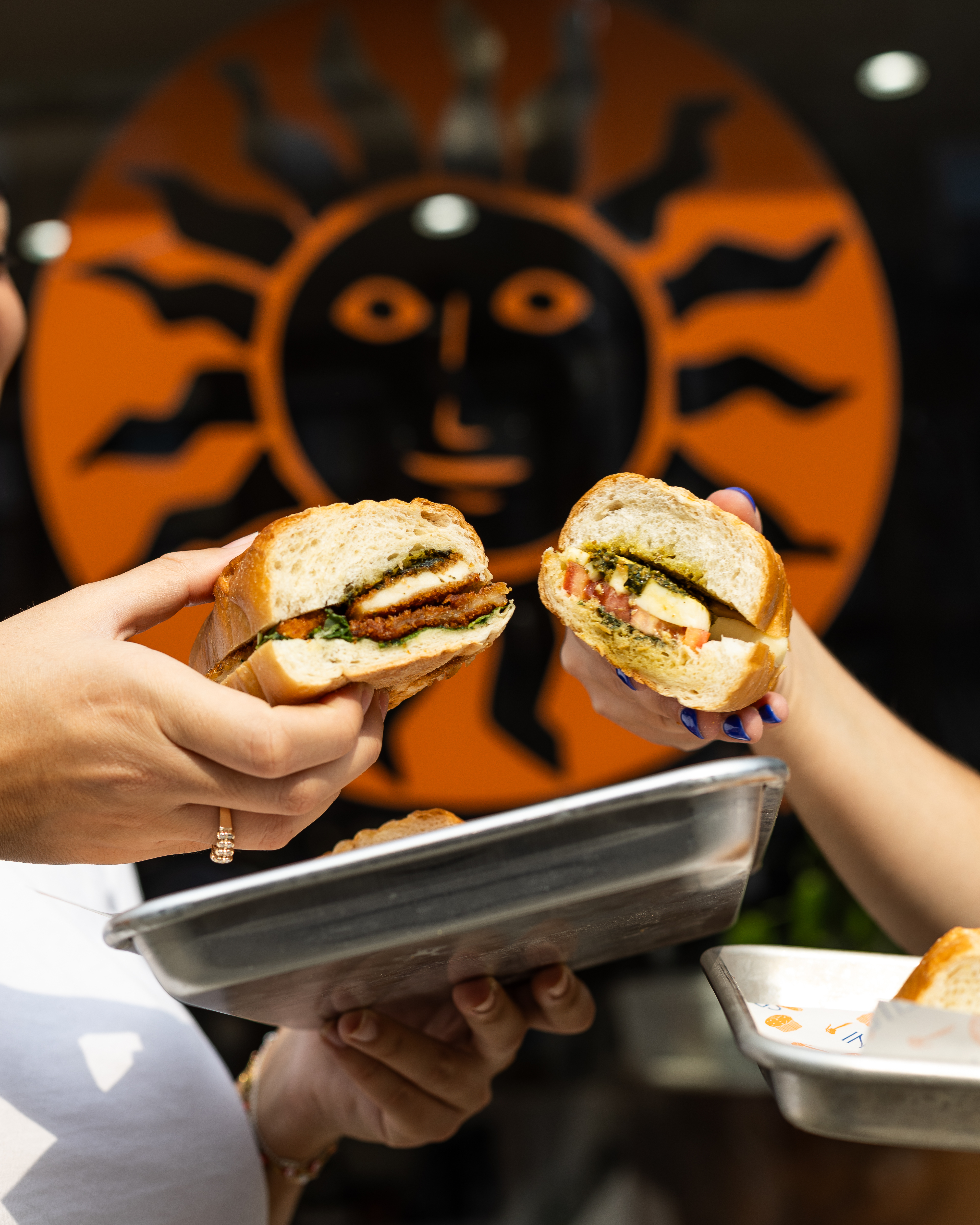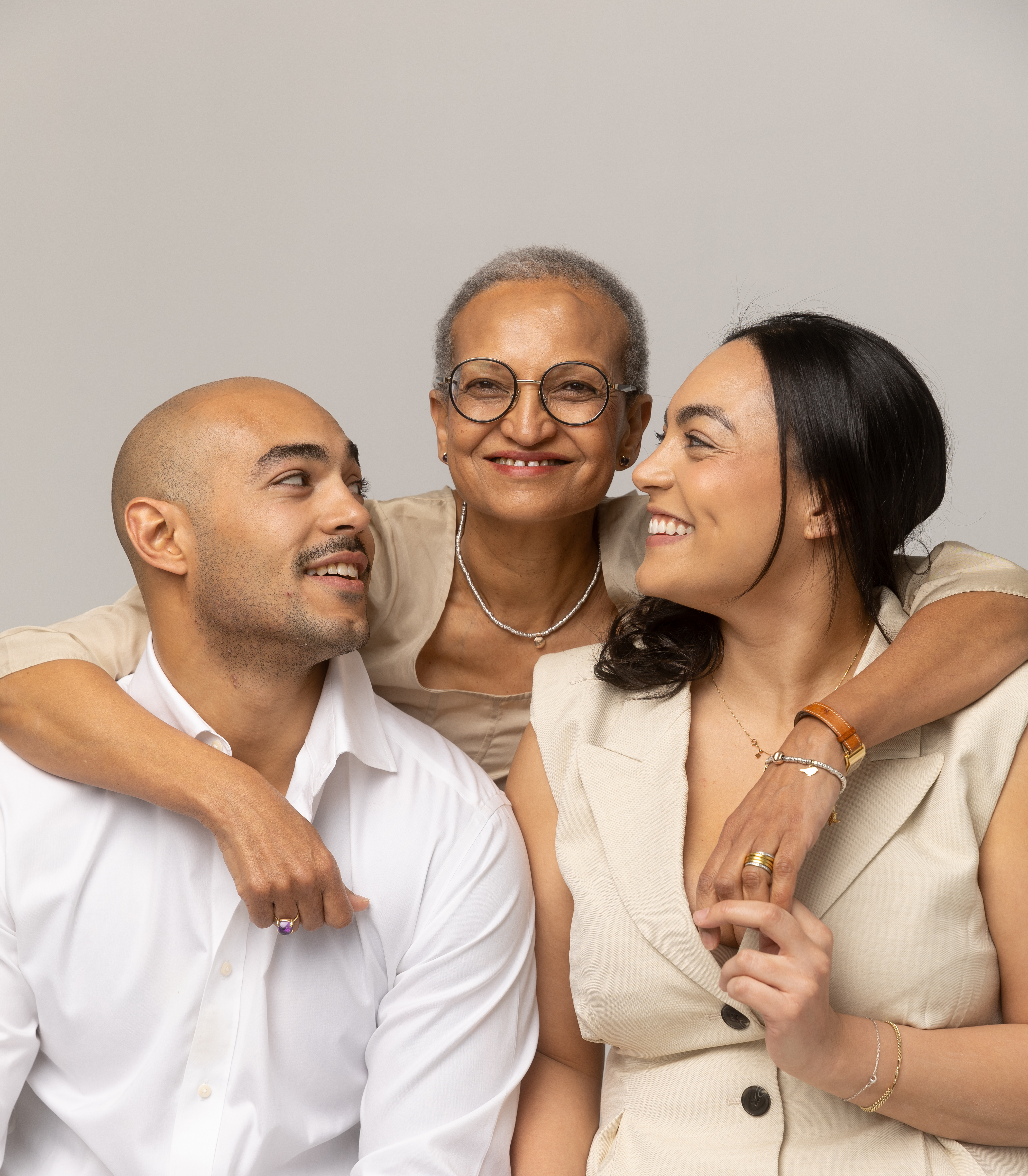Magazine
The Settepani Family’s Story of Food and Connection

At the Davis Center, Central Park and Harlem come together over food, family, and community.
This year, on a brisk winter morning at the Davis Center at the Harlem Meer, the aroma of rich espresso mingling with the buttery warmth of pastries will greet visitors before they can even see where it’s coming from. It’s a scent that gathers people, invites a pause, and slows time.
That small moment—the meeting of warmth, winter, and the powerful memories it recalls—is what the Davis Center is built for. And long before the center opened its doors, that same promise lived on Lenox Avenue, inside a family-run restaurant that taught Harlem what welcome could smell like.
That family is the Settepanis.

And if you live in Harlem, you don’t need the translation; it’s part of the neighborhood’s love language. Settepani means “seven breads.” It’s also the family name. The idea of nourishment is baked right into the bloodline.
Their story begins downtown, when traffic—of all things—changed the course of their lives. Driving from Westchester, Chef Nino Settepani and his wife, Leah Abraham, began cutting through Harlem to avoid the highway. They saw the wide, sunlit boulevard of Lenox, the intricate architecture, the brownstones that leaned against time, still elegant even if many of them were boarded up, and kept asking themselves the same question: Why isn’t there anything here? One day, they spotted a “for rent” sign. They called, but it was taken. Then the landlord called back. A year later, Harlem had an Italian bakery.
Feeding the Harlem Community

When Harlem was a patchwork of boarded houses, vacant storefronts, and long neglect, Leah and Nino saw something else. They saw beauty in the bones, the rhythm of a boulevard, and a neighborhood that deserved excellence, joy, and care. They set out to build something worthy of that vision.
From the start, the restaurant was not a downtown transplant airlifted into Harlem. The neighborhood at the time could not support the downtown model of whole cakes and elaborate gift boxes. So the Settepanis listened. They sliced cakes. They sold individual cookies instead of pounds. They made sandwiches for contractors who were literally rebuilding Harlem around them. They fed people who were renovating, people who didn’t yet have kitchens, people who were in between. “If I had ten cents for every real-estate deal that happened at Settepani, I’d be very comfortable,” Leah joked. The restaurant didn’t just benefit from Harlem’s revival—it fed it.

And in time, Harlem answered. Their regulars come three and four times a week. Neighbors come pregnant and return with their babies. They came in hard seasons—after robberies, after recessions, after loss—and the restaurant stayed for them. When Settepani was robbed at gunpoint, the community filled the dining room the next day and said, Please don’t go. That kind of belonging—built on loyalty, mutual caretaking, and the unmistakable character of Harlem—embodies the same principles guiding the Conservancy’s work in Harlem.
And it is also why the Settepani story feels like such a natural fit for the Davis Center. The facility—the Central Park Conservancy’s reimagined, community-first hub at the north end of the Park—was designed not as a monument, but as an invitation. A gesture to Harlem, to the families who, for years, walked by the old Lasker Rink and Pool and felt both the pull of belonging and the ache of distance.
This is the gap the Conservancy continues to close through the restoration work in the north end of the Park. And this is exactly the gap the Settepani family has bridged again and again with food, kindness, and an open presence.
The Backyard We Share

For the Settepani family, that spirit of community extends beyond Lenox Avenue and into Central Park. Bilena, their daughter, was born nearby and has been part of the business and community since childhood. She skated in Central Park after school and walks the Jacqueline Kennedy Onassis Reservoir, which she calls her favorite place in the world. Her son, Seyoum, jogs through the Park daily, walks their dog, and is very much a part of the community. He began his football career in Harlem playing for the Harlem Jets before going on to play at a Division I university.

Together, they reflect a deep connection to Harlem’s civic and cultural life. The Settepanis are woven into the neighborhood’s everyday rhythm—Ethiopian brunches, jazz nights, community collaborations, board service on 125th Street, and work with Refettorio Harlem to provide dignified meals for those experiencing food insecurity. They are not just of Harlem; they are part of what keeps it moving. And just like every New Yorker, the family calls Central Park “our backyard.”
So when the Conservancy began looking for a food partner for the Davis Center, the neighborhood texted the family: This is you. Apply. They were right. What the Conservancy is trying to do in the north end—make the Park feel unequivocally like Harlem’s again—is what Settepani has been doing for more than two decades: serving excellent food without pretense. “There’s a lot of ownership at Settepani,” Leah said. “People treat it like an extension of their home.”
And the menu? Distinctly Settepani, but also rooted in community. The family has always used food as a bridge between cultures, a way to make new flavors familiar, and familiar ones feel newly alive. That spirit fits perfectly within the Davis Center, where the Conservancy’s vision for Central Park as a truly democratic space comes to life: open, inclusive, and welcoming to all. Settepani already knows how to do this. They start with what people know—pizza, panini, pastries—and then layer in something that nods to the Park, to Harlem, to the people walking through the doors that day. Food becomes a translator. A meeting point. A common language that connects us all.
Extending the Table at the Davis Center

Which is why, when the Conservancy talks about the Davis Center as “built with and for Harlem,” Settepani gives that idea texture, flavor, and life. They know what for Harlem actually means. It means adding pizza to the menu because a child once said, “Why isn’t there pizza in town?” It means watching another neighbor grow from first drinking milk from a bottle, then toasting with wine at their own engagement celebration. And understanding that your restaurant, your presence, was part of that cascade of possibility. The Davis Center was built to be that kind of presence for the community, somewhere stories begin, where neighbors run into each other, where families mark time. And it’s doing so with partners who are already part of Harlem’s story.

In the end, the Settepani dream is clear. “We wanted people to feel like they truly belong here,” Leah said. The Conservancy echoes the same feelings about the Davis Center, about Central Park: we want Harlem to feel like the Park is their backyard. Together it forms a portrait of New York City at its best: a Park opening its doors wider, a family business growing alongside its residents, and a community that has fed, sheltered, and shown up for both.
Hong Vu is the Associate Director of Editorial at the Central Park Conservancy.

EXPERIENCE THE DAVIS CENTER
Come savor the Settepanis' freshly baked pastries, rich espresso, and comforting bites at the Davis Center, an irresistible taste of Harlem in the heart of the Park.



